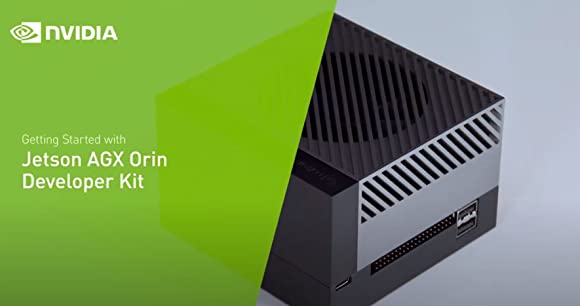
Jetson Orin Developer Kit – What is it?
The Jetson Orin Developer Kit. In our first article and video in the series, we went over some of its features. We did not go over the what of the Jetson Orin much, or why you might use one. Here’s a hint, looky hereIntroduction
If you’re new to the NVIDIA Jetson, it’s a little confusing as to what all the fuss is about. When you see the developer kit you see a small form factor computer, similar to any number of competitors. For example, a direct comparison might be a mini-ATX type of machine. You might appreciate the different form factor and compact size of the Jetson, but for the most part it appears to be more of the same.
If you’re in the Jetson development community already (a million folks are) you appreciate some of the features, but may have some reservations around pricing and packaging. The key to remember is that the Jetsons are a developer kit.
Bifurcation
Bifurcation is a fancy way of saying splitting something in two. We can think of the Jetson market as two parts. First there are the groups like makers that use the Jetson as part of a project. Educators also fall into this group, with many small projects spread out over their students. Jetson Nano is for this group. There may be some people in this group that aren’t as price sensitive and sneak in an Xavier NX. Typically this group is not interested in building their own carrier boards for the Jetson module, and aren’t intending to resell Jetsons.
The other group is what we think of as professional developers. This group will take the Jetson and incorporate it into a product. At a minimum, expect a different carrier board and module with thermal solution. NVIDIA frowns on including the developer kit in a commercial product. The Jetson module selection ranges from the Jetson Nano through the Orin.
Here’s the Jetson Difference
What isn’t immediately obvious to the uninitiated is why you need a developer kit. One reason is that you can use the Jetson in different power envelopes. What does this mean? For example, a Jetson Orin can operate at anywhere from 10 to 60 Watts of power draw. You can run the Jetson from a battery, or draw power directly from the wall. It is these power targets that make things interesting.
For example, you might want to build a game tablet. You have a budget of around 15 watts. Or a bigger tablet, 20 watts. A small AI server, 40 watts. Here’s a very generic chart:

Notice that we’re showing Apple products here. Here’s the reason: Apple has made the switch to run all of their products with a System On a Chip (SoC). You know what else has a SoC? A Jetson. Like most mobile phone makers Apple has been using an SoC, what they call their A series of chips, for quite some time. What’s new is that in the last couple of years they switched to variations of a single SoC for their iPad and Macintosh lines using what they call their M series chips, currently M1. Variations of the same chip, different products, different price points.
You might be surprised to find out that Apple does not offer an “Apple M1 Developer Kit” where you can design around the M1 and include it in your product. NVIDIA does this with the Jetson SoCs, which is about the only practical way to get a lot of AI goodness into your design easily.
Power and Thermals
If you take this clever idea and think about the product you design around it, you need to know two things. First, you need to figure out how much power you need to meet your application performance goals. The second, and probably the most physically challenging, is to figure out the thermal requirements to keep everything cool.
If you are using a battery for your power source, then you have the trade off of power consumption versus performance. If it’s a battery solution that’s mobile, then you have to keep the device cool enough for the happy humans. I’m sure you’ve had a tablet or laptop at some point that’s generated enough heat as to be uncomfortable to handle.
If you’re using your Jetson flat out, you’re generating a good amount of heat. I’m sure we’re all happy to have our development computers under the desk in the winter as space heaters. During the summer, not so much. Now a Jetson does consume that kind of power, but there’s still enough where you need a good thermal solution for the module.

You can see the difference in the size of the thermal solutions for the Xavier AGX vs NX, the two computers in the center of the picture. The Xavier NX runs from 10-20 Watts, the AGX Xavier runs 10-50 Watts. That extra 30 watts will impact your design significantly, along with any peripherals you attach.
That’s what the developer kits are for. A place to juggle (I guess the engineers would say balance) the demands for power consumption, thermal stability, and both hardware and software development.
Conclusion
The intent of the Jetson Developer Kits is to provide a starting point to include Jetson modules in your design. Or to provide an easy solution to one-off problems or projects. Either way, the Jetson is way more interesting than what it first appears to be.
Items shown in video:
- NVIDIA RTX 3090 Graphics Card: https://amzn.to/3KdvEUJ
- SmallRig NP-F Battery Plate Adapter: https://amzn.to/3MyHwCw
- Generic NP-F 550 2 Cell Battery: https://amzn.to/3kgEsi5
- Generic NP-F 750 4 Cell Battery: https://amzn.to/3vgePo4
- Antigravity Micro-Start XP-1 Battery: https://amzn.to/3LwDbiQ
